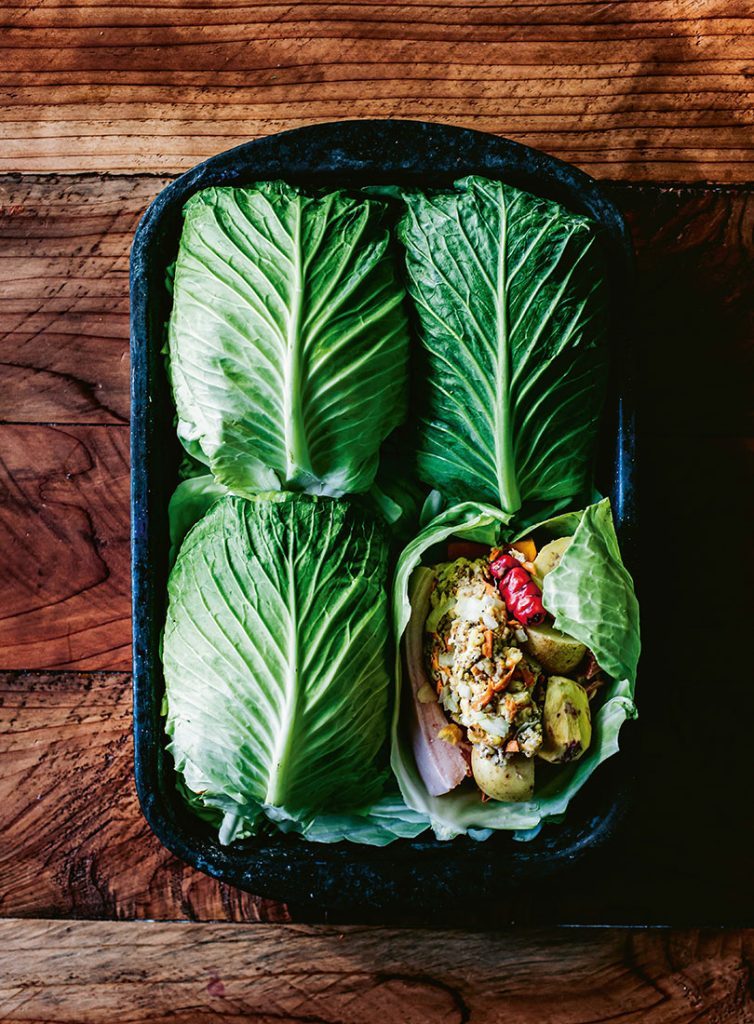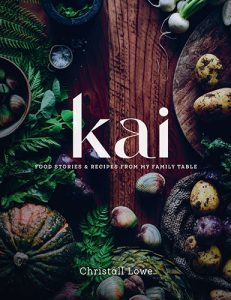Oven-Cooked Hāngī Kono
Christall Lowe

Serves
4Ingredients
| 1 cabbage | |
| 4 pork chops, well salted | |
| 4 lamb chops, well salted | |
| 2 kūmara, peeled and chopped into 3cm chunks | |
| 4 potatoes, peeled and chopped into 3cm chunks | |
| ¼ pumpkin, peeled and chopped into 3cm chunks | |
| salt | |
| ½ cup water | |
| FOR THE STUFFING | |
| 8 slices of bread | |
| 1 onion, diced | |
| 1 medium carrot, grated | |
| 2 tablespoons mixed herbs | |
| 2 teaspoons salt | |
| 100g butter, melted |
COOK’S NOTE
These kono (food baskets) are simply meat, root vegetables and stuffing steamed inside cabbage-leaf parcels. You can use any cut of meat, but pork and lamb are hāngī favourites. You can also experiment with the root vegetables used. This was my nana’s way of making a ‘hāngī’ in the comfort of her own kitchen, especially in winter. No digging required, no wood to burn, no stones to heat! The result is succulent, tender parcels of kai, steaming hot as if they’d just come out of the ground. And don’t forget the salt, as Grandad would remind us constantly. Seasoning your meat makes a huge difference to taste!
View the recipe collection here
Instructions
| 1. | Heat oven to 200°C. |
| 2. | To prepare the stuffing, break bread into small chunks by hand, or in a food processor. |
| 3. | Combine all ingredients in a bowl, and set aside. |
| 4. | Line a large roasting dish with 2 layers of cabbage leaves (use the smaller inner leaves for this, and save the large leaves for your ‘baskets’). |
| 5. | Using 4 large cabbage leaves as baskets, fill each with one pork chop and one lamb chop, 6 to 8 vegetable chunks, and top with stuffing. |
| 6. | Place each cabbage basket into the roasting dish, season with salt, and cover each with two large cabbage leaves. |
| 7. | Pour the water over the whole dish and cover snugly with two layers of tinfoil. |
| 8. | Cook for 1 hour at 200°C, then lower the temperature to 160°C and cook for a further 2 hours. |
| 9. | Remove from oven and serve immediately, using a spatula to place each kono on a plate for diners to open and enjoy. |
 This is an edited extract
This is an edited extract
from Kai by Christall
Lowe. Photography,
food styling, recipes
© Christall Lowe.
Bateman Books $59.99.
